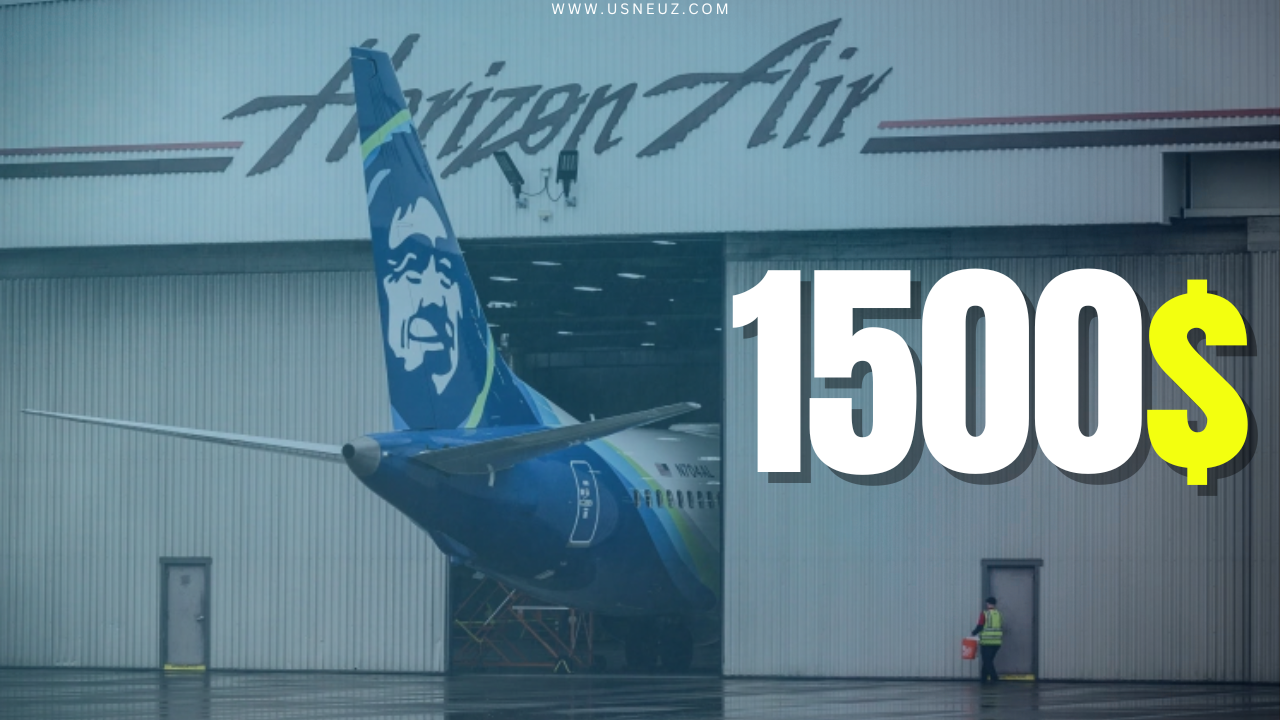
Is Alaska Airlines’ $1,500 Passenger Compensation Enough?
In the aftermath of the alarming midflight incident aboard Alaska Airlines Flight 1282, where a door plug malfunction led to a significant rupture in the Boeing 737 MAX 9 aircraft’s fuselage, legal experts in the aviation industry are closely examining the airline’s response and the compensation offered to affected passengers.
The incident occurred a mere 20 minutes after the flight’s departure from Portland, causing a noticeable breach in the side of the aircraft. While investigators work to determine the exact cause, questions are arising regarding the swift $1,500 cash payments made by Alaska Airlines to each of the 177 passengers.
Renowned aviation attorney Charles Herrmann, with experience in representing families in previous airplane crash cases, underscores the likelihood of someone being at fault for the door plug incident, whether due to negligence or failure to adhere to proper procedures. Concurrently, six passengers have initiated a potential class-action lawsuit against Boeing, seeking compensation for injuries and other damages resulting from the harrowing incident. Notably, Alaska Airlines is not named as a defendant in this legal action.
Alaska Airlines promptly refunded passengers on Flight 1282 and, within 24 hours, provided a $1,500 cash payment to each passenger as an immediate gesture of care. The airline asserted that the payment aimed to cover any incidental expenses and ensure immediate needs were met. Additionally, mental health resources and counseling sessions are being offered to those affected.
Despite these efforts, some passengers and legal experts contend that the $1,500 compensation is inadequate. Robert Hedrick, an attorney with the Aviation Law Group in Seattle, remarked that while early payments can sometimes alleviate passengers’ sentiments, the amount offered in this case is considered insufficient, with one passenger expressing that it does not reflect the trauma experienced during the incident.
The filed lawsuit outlines various injuries, both physical and emotional, including concussions, soft tissue injuries, internal bleeding, and difficulty breathing. Furthermore, the complaint alleges that numerous emergency oxygen masks failed to function during the midflight emergency.
As the National Transportation Safety Board conducts its investigation, additional legal claims may surface. Aviation attorneys caution passengers not to feel pressured in filing claims hastily, as emotional distress and PTSD symptoms can manifest days, weeks, or even months after such incidents.
In response to the incident, Alaska Airlines has temporarily grounded all 737-9 MAX aircraft for inspections, affecting 110-150 flights per day. The airline aims to address safety concerns and provide support to affected passengers. CEO Ben Minicucci expressed a commitment to a thorough and transparent review of the incident and extended apologies to those who endured the terrifying event.
In the aftermath of the alarming midflight incident aboard Alaska Airlines Flight 1282, where a door plug malfunction led to a significant rupture in the Boeing 737 MAX 9 aircraft’s fuselage, legal experts in the aviation industry are closely examining the airline’s response and the compensation offered to affected passengers. Alaska Airlines Emergency Landing: What…
In the aftermath of the alarming midflight incident aboard Alaska Airlines Flight 1282, where a door plug malfunction led to a significant rupture in the Boeing 737 MAX 9 aircraft’s fuselage, legal experts in the aviation industry are closely examining the airline’s response and the compensation offered to affected passengers. Alaska Airlines Emergency Landing: What…